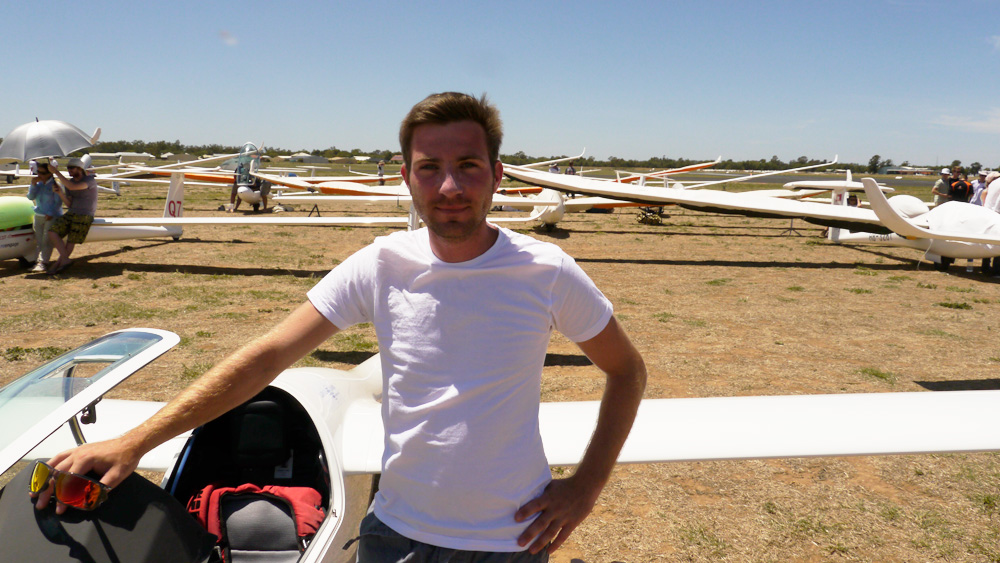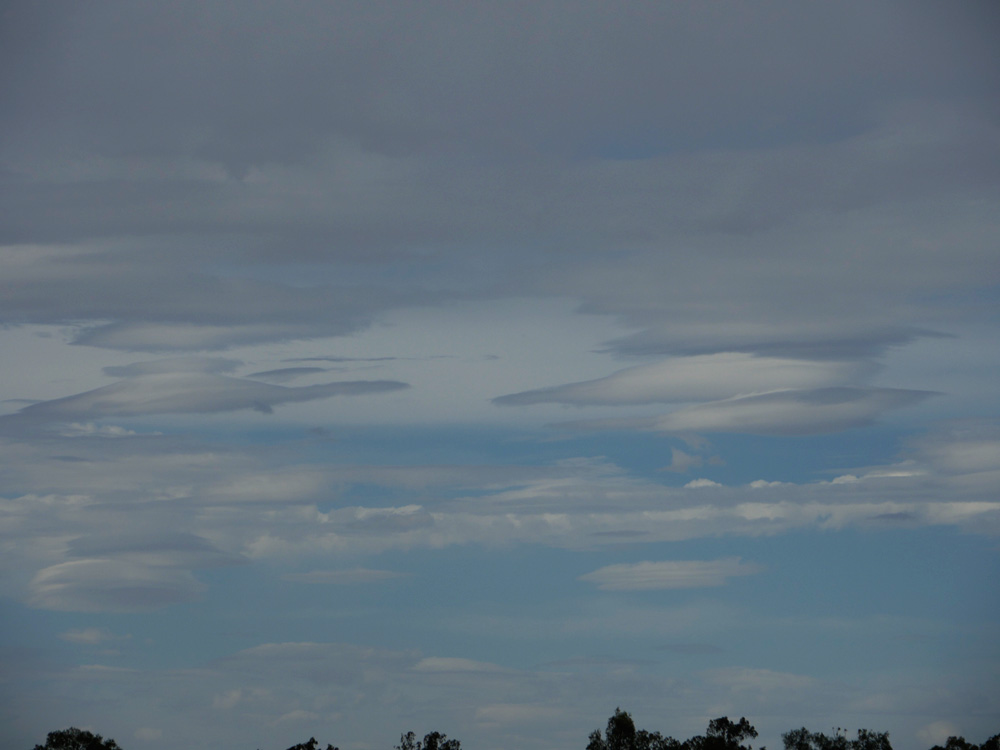
Sebastian Nagel from Germany preparing for launch 11 December. 'This is a tough competitionn.
The conditions are tough, we are not usd to sm many competiton days in Europe.' Sebastian is proving himself
to be a tough competitor in third place after 10 racing days.
The weather and task briefing at JWGC2015 Day 10 was optimistic. However, task setter Paul Matthews’ first comment to me as we met in the club for breakfast was “The weather looks whacky today”.
A cold front - not just the usual summer inland trough - was clearly visible on the on the morning satellite picture. It was forecast to approach the task area from the south with great speed. At the same time a large mass of cloud was visibly forming in the centre of the continent and covering western New South Wales.
As the cold front, originating from the Southern Ocean, raced across Victoria and southern New South Wales, its northern tip connected with an inland trough and high pressure, sucking the air mass to the south as it passed. This generated a relatively localised, circulating low pressure area of about the size of Spain, with moist air feeding in that led to a large are a of multi-level cloud forming.

Ailsa Mc Millan was one of nine Standard Class Pilots to complete todays task placing her in 13the position overall.
That is my interpretation in any case. The meteorologists present at Narromine - there are several working for the various competing teams - were too busy to give me a comment, trying to retrospectively come up with a cohesive theory for today's weather.
Regardless of forecasts, the day proved to be difficult for the pilots in the air. On the grid the tasks were changed to task B for Club Class and task C for Standard Class, so that each class was set a slightly different 391 km fixed task.

A stiff wind had been forecast but the foreboding blue sky with cirrus and fast moving banks of low cloud above the western horizon, together with gusty south westerlies, created a pensive mood at the launch point.
Club Class was the first to launch with several re-alights necessary. The conditions at low levels were clearly difficult in the strong breeze.
As the start gates opened the weather from the west was already close to Narromine and moving rapidly. A northern task area had been set to keep the fleet away from the advancing weather but from the ground it seemed clear that the contestants would soon be overwhelmed by the high winds and deep cloud layers.
The two Swiss and two of the three Czech pilots in Standard Class landed out close to Narromine. The remainder of the fleet continued north toward the better looking sky that was filling with cumulus.
Later in the afternoon, after most pilots had turned the top turn points, the sky to the north of Narromine was filled with a complex mixture of wave formations, flat cumulus and spread out. Narromine was ominously covered in low level scud with banks of cloud and worse on the way from the southwest.
Groups of officials and many visitors congregated at the club house to listen on the radio and watch the drama unfold on laptop, tablet and smart phone screens. Crews hurriedly prepared their glider trailers in case of landouts.
As the competition draws to its climax, previous WGC team pilots including Bruce Taylor,om Glibert, Adam Woolley and many gliding personalities are gravitating to the contest, adding to the atmosphere, sense of history and moment that that now grips Narromine Airfield.
As the crowd conversed and reminisced, the first competitors made it home. Three Standard Class pilots - Mateusz Siodloczek at 138.14kph and Jacek Flis at 137.94kph, both from Poland, and Matt Davis at 136.74 kph from Britain, arrived within seconds of each other at 16:40. Mateusz and Jacek pipped Matt at the post by six seconds and ended up with 932 points for the day.
Then a long wait ensued. Eventually one, then another, and another landout was reported. At 17:50 Boyd Willat from team USA, landed - the only Club Class competitor to complete the task and scoring 1,000 points for the day at a speed of 85.51 kph.
Within two minutes of each other at about 18:40, nine more Standard Class pilots made it home with speeds of approximately 84 kph. The remainder of the fleet landed out. Some were close to home, but many were further away from Narromine.
When all the scores came in the new leader board became clear. In Standard Class,
Australian Matthew Scutter remains in top position, 280 points ahead of Robin Smit from the Netherlands with German Sebastian Nagel in third position.
In Club Class, Philipp Schulz from Germany is still ahead of Tom Arscott of Britain, followed by two further Germans Robin Diesterweg and Simon Schmidt-Meinzer and American Boyd Willat, now in fifth place.
Tomorrow, 12 December 2015, is the last competition day. As official daylight ended soon after 8:30pm, the red sun pierced beneath the fast moving cloud bank. A tequilla sunset filled the sky. As the saying around here goes, red sky at night, she'll be right.
Full scores JWGC2015 Results
Sean Young


